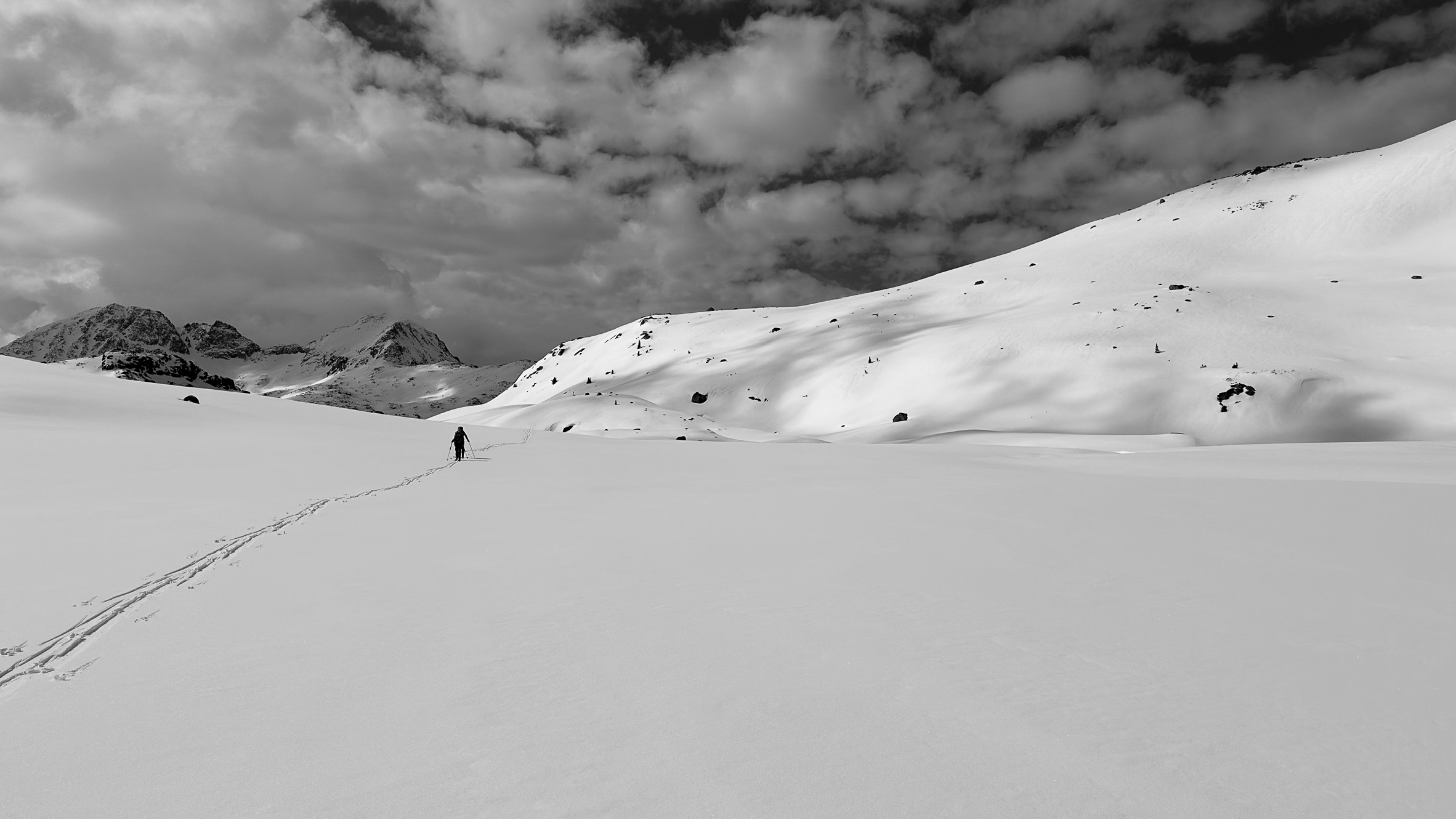In part one of this series, Morgan Coney presents some basics in “Backcountry Skiing and Menstruating.” As the new week begins, part 2 provides information on hygiene and more beta for how the non-menstruators out there can support the menstruators.
****
Backcountry Strategies: Staying Clean
Staying clean while winter camping is challenging, whether or not you menstruate, but it’s essential for our health and safety. Always wash your hands when using a cup or a tampon (especially without an applicator). Soap and water are best, but you can use hand sanitizer in a pinch; make sure it dries before touching your body!
Soap
I keep a small container of liquid soap in my chest pocket. I have too much anxiety to put myself in a situation where there is time pressure to thaw my soap. That’s a no for me, folks. I’ve also seen success using bar soap for a winter trip. No stress about keeping it from freezing!
A small canvas bag or hard-sided container is helpful to hold the bar soap and contain any mess, though this option is a little bulkier.
Gloves
You can also throw a couple of extra latex gloves in your first aid or dopp kit. Use them to insert a cup or tampon in a pinch if you can’t clean your hands, but I don’t love relying on this option because of the waste.
Wipes
Wipes can be a useful addition, but they are essentially mini wet towels, meaning they will freeze. If you are on a multi-day trip, you may need to sleep with the wipes or keep them in an inside pocket—this is where drop pockets come in handy. Otherwise, you’ll just be carrying around a big frozen puck, and that’s not very useful. Whether you use baby wipes or specific “feminine hygiene” wipes doesn’t matter much. Look for unscented wipes and only use them on exterior genitalia, i.e., no need or benefit of putting a wipe inside your vaginal canal. Even if marketed for the vulva or vagina, that’s all it is—marketing. Products marketed as “freshening” are often unnecessary, and sometimes they CAUSE irritation. Vaginas don’t need to be freshened!
If you don’t want to deal with the defrost cycle or the garbage, you can also use water and unscented soap to wash your genitals.
Backcountry Bidet
I recommend the backcountry bidet. Know this is zero percent bidet and 100% you touching your butt with your hand and washing thoroughly. P.S. This is how a lot of folks all over the world clean themselves, it’s pretty much the same as washing your butt in the shower (if you aren’t doing that, please start now), and it will make you feel SO good when the rest of you is super dirty. To do this, fill a bottle with water (pro tip: warm it up while you’re making coffee water), find a private space, take the top off your soap and lid first, get one hand wet and splash your genitals, continuing to add water and a little soap until clean, including suds. Make sure not to use your dirty hand to touch anything else during this time. Then, use a little soap on your dirty hand and try your best at a one-hand rinse. After, get hand number 2 involved. You can try propping the bottle somewhere to pour. I prefer taking a big gulp of water, putting a little soap on my hands, and slowly pouring water out of my mouth and onto my hands as I scrub. You can do a second round this way or pull your pants up and ask a friend for help.
Dromedaries can often offer a great trickle, but in winter, the nipple too frequently freezes for me to feel comfortable relying on it. Washing is recommended for people of all genders to avoid irritation caused by lingering sweat, urine, and fecal matter. Wash your butt and the exterior of your genitals. Again, the inside of the vaginal canal does not need to be cleaned.
Potential Issues
Infections like Urinary Tract Infections (UTIs) occur when certain bacteria (usually from fecal matter) get into the urethra. UTIs are much more common in people with vulvas because that anatomy positions the urethra closer to the anus than for people who have penises. However, some folks are just more prone to getting them.
There are a few things you can do here to limit complications. Stay hydrated, don’t hold in pee, and wipe front to back with something dry – a pee rag, toilet paper, wipes, or a kula cloth. Make sure to dispose of wipes properly, and depending on the length of the trip, pee rags or kula cloths may need to be washed.
Bacterial Vaginosis (BV) and Yeast Infections are also caused by bacteria buildup and can become more prevalent on long camping trips. If you or someone on your trip is prone to UTIs, BV, or Yeast Infections, you can ask a provider for a prescription for antibiotics or antifungals to take along.
Cervical discharge itself is normal, though the color, thickness, and amount vary throughout the cycle. With regular washing, you may find you need to pack less underwear and/or wash them less frequently. Some folks bring liners (very thin pads) to absorb the discharge on long trips to keep their underwear clean.
Here are a Couple of Last Tips for Y‘all (for Menstruators)
- Are you prone to cramping? Bring some ibuprofen (hopefully, that’s in your first aid kit anyway) and adhesive toe-warmers. We love multi-purpose items; stick the toe-warmers to your body wherever you get cramps, and you have a low-tech hot pad. Alternatively, heat water and put it in a non-insulated water bottle. With toe-warmers or a bottle, put a layer of fabric between them to ensure you don’t burn yourself.
- I think peeing and dealing with menstrual products is easiest while on your skis, risers set in climbing mode, i.e., skins on and heels unlocked. If you accidentally pee on your skis, know that you aren’t alone; pee is sterile, and you can usually get the remnants off with a little snow. If you get a lot of pee on your skins, it can cause snow to stick, which is NOTconvenient. So, practice! Figure out what works best for your body. Pull your pants to your knees versus your ankles, put the tips of your skis together, and make sure you have everything you need. My favorite pee position is a deep squat while holding onto my skis, but I’ve seen people use poles, stagger their legs, etc. Just beware of the dreaded sinking pole or a breakable branch if you use props! Pee funnels also exist and can give more privacy. I recommend them if having more privacy means you’ll pee more. Pee funnels are another good thing to practice before heading out — try them in the shower first. Remember that hydration prevents us from both infection and exhaustion from ski touring.
- If you need to do laundry on your trip, the crux is drying. Usually, laundry drying is done with body heat. The closer the clothing is to your skin, the faster it will dry, but the colder it will make you. So weigh those odds, and if you’re getting too cold, move it another layer farther from your skin. I know some folks that wash their underwear every time they poop and then put it immediately back on. In a winter context, I don’t recommend this. I’m too concerned about cold, and lingering wetness leading to infections. If you do this and it works for you, amazing!
- If you are having trouble with chafing from pads, using body glide on the inside of your thighs often helps. This is typically more of an issue in the summer, but some of us (me) are sweaty people all year long.
- Out for multiple days? Add a crushed aspirin or dry tea bag to your waste bag for odor control. This isn’t usually an issue on a winter camping trip since everything is frozen, but if you’re concerned about thawing or on a spring trip, it can be nice. It’s also true that once everything warms up after winter camping, all your stuff will stink anyway, so give yourself some grace and don’t worry about it. We don’t owe it to anyone to smell like roses all the time.
Beta for the Non-Menstruators Out There
- Carry tampons/pads! How many?? You probably don’t need to plan to support every menstruator on your team as they will most likely bring their own supplies, but intense exercise, among other factors, can cause irregularity, so it’s worth having some extra. They can also be useful in first aid scenarios since they are absorbent. Your first-aid kit can be a goodplace to keep them.
- Be patient with your ski partner if and when they need to change their menstrual products. It can feel embarrassing for folks, and there is already a narrative that people have to wait for femme people, so adding pressure just makes it worse.And if you read the rest of this article, you may have picked up on the fact that waiting can lead to leaking (which equals winter laundry), irritation, or even infection. Be patient with peeing, too! Believe me; it’s a way bigger pain for us to expose ourselves to pee than for you to wait an extra minute.
- On that note—give us some privacy. Many winter environments are exposed, and there aren’t always trees where we need or want them, so avert your eyes, please. (This is true for everyone, not just people you assume menstruate.) A lot of trans people feel very unsafe in the outdoors peeing, and it’s none of our business how people go about their business. We don’t want ANYONE holding in their pee or refraining from hydrating because they don’t feel like they have enough privacy on a ski tour.
- Do some research and know your stuff. If you can figure out pin bindings, you can understand menstruation. Learning more about the experiences of the people we spend time in the mountains with helps us become better people and partners. Ask appropriate questions, be open to conversations about hygiene, and share tips you’ve learned from others. Anything you can do to help limit the stigma and shame around menstruation will make the snow-covered slopes more welcoming to more folks.

